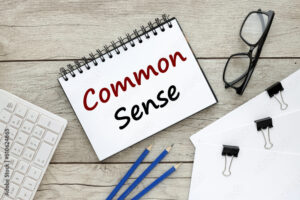This post concludes ECS 203. Below is my summary of learning to recap the semester.
It was a wonderful semester that taught me so much about saskatchewan schools and education moving forward.
QR Code:

Link:
Summary Of Learning Final Post
Thank you!
This post concludes ECS 203. Below is my summary of learning to recap the semester.
It was a wonderful semester that taught me so much about saskatchewan schools and education moving forward.
QR Code:

Link:
Summary Of Learning Final Post
Thank you!
The readings/videos that I viewed this week are:
Mathematics is typically considered concrete and to the point. It can be right or wrong and there is no in between. Math is so static and concrete in Eurocentric mathematics that we have theories and formulas to solve and prove math problems without using a single number. However, this static idea of math is challenged by Inuit mathematical techniques which opens a whole new world of math.
After reading the assigned articles this week I identified some key differences between Eurocentric mathematics and Inuit mathematics:
Eurocentric Mathematics:
Inuit Mathematics:
 To summarize, Eurocentric math is based on concrete scientific ideas to solve problems that is often taught by presenting steps to a students and asking them to memorize then perform on a test. Inuit math is much more intuitive and includes context such as singular, double, or multiple versions of numbers. Plus I cannot forget to mention the obvious difference between the two math styles is the use of base 10 and base 20.
To summarize, Eurocentric math is based on concrete scientific ideas to solve problems that is often taught by presenting steps to a students and asking them to memorize then perform on a test. Inuit math is much more intuitive and includes context such as singular, double, or multiple versions of numbers. Plus I cannot forget to mention the obvious difference between the two math styles is the use of base 10 and base 20.
“Single stories” are the idea that if you continuously hear stories about a culture, group, or even a movie from one lens perspective then you are only going to get one side and will mis so much from another lens. This is very common in schools and has a very negative response. Teaching from one lens will develop biases and ignorance because there is always multiple sides to a story and you cannot fairly create an opinion based on a “single story”.
My schooling experience was developed through a eurocentric viewpoint and many cultures and ideas were left out of my education because I was only given a “single story”. This is unfortunate because it is important to learn from many lens perspectives because everyones truth matters.
Currently, I unfortunately think I bring some biased lenses to the table due to my lack of knowledge of other perspective and lenses. After reflection I realize this is a problem and I need to open my world and entertain other lenses so I can be a better teacher. Moving forward in the future I am going to bring multiple stories to my classroom. First, I will need to take the time to learn and listen to other perspectives. I am an aspiring high school math teacher and I have learned a lot through the assignments I have done throughout this term. I learned about the importance of incorporating a students interests and culture into a math classroom. I will continue to learn about new perspectives so I can unlearn the lenses I have already learned.
Treaty Ed in a classroom is important regardless of the diveristy in the classroom. It is importamt because we are all treaty people and we all have a part to play in reconcilliation. The first step is being willing to learn and properly undertsand history. I think that often when there are racist remarks or a lack of willingness to learn in a classroom, as an intern had experienced, it can be from lack of knowledge. When teachers choose to neglect the required Treaty Ed outcomes the students see this and think this must not be important. In the conversation between Claire and Mike, Claire suggested that if we stopped teaching math people would notice. Similarly, when school cuts are made and Arts Education is downsized people feel like the school system does not value Arts Education. It makes sense that in a school that the teachers do not value Treaty Ed the students will not either.
To try make a difference in this school and stress the importance I think this intern needs to speak with the other teachers and help them to understand the importance of Treaty Ed. Additionally, it is a teachers job to hit the Treaty Ed outcomes. Next, I would suggest beginning from the basics with the students. As claire mentioned, if a grade 8 class has never learned about treaty education you cannot jump to grade 8 outcomes regarding it. You need to start at the beginning.
In my opinion we are all treaty people because we are all apart of Canada’s history and we are on treaty land. Additionally, it is our responsibility to all play a part in truth and reconcilliation. To do this we must learn what we can and teach others what we know. Especially as teachers it is our responsibility to educate our students and include the Treaty Ed coutcomes.
This week I read a few articles that outline three learning theories. Objectivism, constructivism and cognitivism.
In short objectivism can be defined as a learning theory that includes formulas, terminology, and information to be passed from a teacher to student. This can be closely related to the curriculum, orientation, known as product. The curriculum orientation of product is the idea of passing information from teacher to student through assessments with an end goal in mind. This method is present because an objectivist approach to teaching states that a “student’s responsibility is accurately to comprehend, reproduce and add to the knowledge handed down to him or her” (2.3 Objectivism).
Constructivism is the idea that what we learn from experiences we have had in the past. For example, students taking pre-Calc 20 are expected to have taken pre-Calc 10 and understand the material so they can now build on it. This demonstrates the praxis method because teachers need to work with their students to ensure they have the previous knowledge (2.5 Constructivism).
Cognitivist thinking believes that there is a journey to learning that require students to memorize, understand, analyze, evaluate, and then create. I believe this demonstrates a process method of curriculum orientation. This orientation focusses on working with students and building a journey/process of learning. This education theory works to help students understand why we are learning what we are and how it works (2.4 Cognitivism).
In my experience I have witnessed all of these education theories in various subjects. I think it is very common to begin with memorizing the material and then working towards understanding it.
This week we read two articles: “Curriculum Policy and the Politics of What Should be Learned in Schools” and “Saskatchewan Treaty Education document”.
The first article was a very informative document regarding curriculum policy and politics. It gave insight into the challenges of creating a curriculum. It brought up questions such as :
The second article outlined the goals for grade 12 students to be able to reach by the time they graduate regarding treaty education outcomes.
The outcomes include:
To begin, curriculum is defined as “an official statement of what students are expected to know and be able to do” (Connelly 8). A curriculum is developed by government officials or by other authorities to be used in schools. This article provides a new perspective on the political issues found in schools because the curriculum is so political. As mentioned above there is so many opinions and expert advice that is offered for a curriculum it is hard to decipher what the best option would be.
After reading this article I am concerned about this statement: “Most policy decisions in education, including curriculum decisions, are made with little or no public attention” (Connelly 8). Since schools are highly public and it is a right for all children to attend school I would have believed that it would be an entirely public matter.
The Saskatchewan Treaty Education document is full of great outcomes and goals that is proposed to be in all schools. From knowledge gained in previous classes I can imagine that there must be tension regarding where this should fit into a curriculum and what should be removed in place of this addition. Everybody wants more of every subject but it just cnnot happen so something will need to be removed to create space and this will inevitably cause tension. Additionally, I could connect to this document because I graduated high school not too long ago and can recall learning these outcomes/goals in my Indigenous Studies courses that I took through out high school.
Works Cited:
Connelly, F. Michael, et al. The SAGE Handbook of Curriculum and Instruction, SAGE Publications, Incorporated, 2007. ProQuest Ebook Central, https://ebookcentral-proquest-com.libproxy.uregina.ca/lib/uregina/detail.action?docID=996458
This week in class we read two articles: A History of Education and Preparing Teachers for Crisis: What It Means to Be a Student. To summarize A History of Education introducuces us to the ideas of education in China and India. We are told the way that society works and how this inadvertently affects the classroom. The article Preparing Teachers for Crisis: What it means to Be a Student walks the reader through a teachers experiences and struggles with students. They explained that students are not bad or unwilling to learn but may not learn in the same way as other students do and that we must adpat and consider students past. 
To be a “good” student according to commonsense a child must sit quiet when asked to, follow along with the class, and learn in a manner that is similar to every other child. Also, to be considered a “good” student a child must come into a classroom with no past knowledge or information from past experiences, parental advice, or wrong information.
A “good” student is shaped by historical factors because a student brings every experience from their past with them into a classroom. Whether good or bad a student is influenced from these experiences and the way we teach must be altered for them.
In class this week we read two articles, The Problem of Common Sense and Smith – Curriculum Theory and Practice. The problem of Common Sense introduced us to the idea of common sense education. This is the idea that there is a set of common sense rules in a school system that is completely normal to one group but may not be to another. The article, Smith – Curriculum Theory and Practice, introduced us to four approaches to curriculum. These four are product, praxis, process, and syllabus method. The product approach is focused on the end result and is then measured. Praxis is the idea that teachers will shift with students. Process is the idea that there is a plan of the way it will be taught to students. Lastly, the least common is the syllabus method. This is the idea of transmitting infromation from teacher to student.
Kumashiro defines ‘commonsense’ as a normal routine to one particular culture that describes the way the group interacts with eachother, describes the professional world and much more. Many societies have a very clear ‘commonsense’ when it comes to education. Kumashiro’s explanation of ‘commonsense’ relating to education is that it tells us that there is one way to teach and it is the only correct way. Kumashiro explains that the ‘commonsense’ curriculum in Nepal is a “Lecture-practice-exam” style. I realted this to a syllabus style because it appears to be giving lots of information to students for them to memorize then spit back out on an exam. This means the children sit in desks and listen to a teacher lecture straight out of a book, then return home and practice the problems, then come prepared to school for an exam. It is extremely important to pay attention to ‘commonsense’ because you cannot understand the issues and oppressions occuring if you do not understand the routine of the system.
have a very clear ‘commonsense’ when it comes to education. Kumashiro’s explanation of ‘commonsense’ relating to education is that it tells us that there is one way to teach and it is the only correct way. Kumashiro explains that the ‘commonsense’ curriculum in Nepal is a “Lecture-practice-exam” style. I realted this to a syllabus style because it appears to be giving lots of information to students for them to memorize then spit back out on an exam. This means the children sit in desks and listen to a teacher lecture straight out of a book, then return home and practice the problems, then come prepared to school for an exam. It is extremely important to pay attention to ‘commonsense’ because you cannot understand the issues and oppressions occuring if you do not understand the routine of the system.
The Canadian education system follows its own set of ‘commonsense’ guidelines that may provide benefits and drawbacks to students. Some examples include:
Benefit: These core classes will be covered every year and there should be little overlap and minimal areas not covered.
Drawback: Some other subjects such as French, digital safety, or accounting can be neglected that are also extremely important for joining a working society.
Benefit: Many agree this is an appropriate age to introduce children to safety on the internet and do not want to introduce it much younger because they feel that kids should not be subjected to dangers on the internet.
Drawback: Many kids are recieving tablets or phones at a younger age than this and may already be subjected to these dangers but are not educated. Our world is changing and the age of children receiving access to technology is decreasing faster than the curriculum is being updated.
Th ese are a few larger examples that effect the students in the classroom. ‘Commonsense’ education can go as far as classifying our subjects with certain colours. To me and many of the kids I attended elementary school with math is red, science is green, English is blue, and social studies is purple. It is strange to think about the tiny things that happen every year in a school that never seem to change just because it has not been challenged
ese are a few larger examples that effect the students in the classroom. ‘Commonsense’ education can go as far as classifying our subjects with certain colours. To me and many of the kids I attended elementary school with math is red, science is green, English is blue, and social studies is purple. It is strange to think about the tiny things that happen every year in a school that never seem to change just because it has not been challenged
The approach that Canada appears to be working towards/using is the praxis method. This is because our teachers are working with students to help them learn their best. Additionally, at some schools there are plenty of programs offered to students for support.
In Canada it is commonsense to have summer holidays during July and August but if you do not understand that this is routine and perhaps not actually beneficial to many you cannot critically think about it. This school calendar was developed years and years ago when stay at home parents was much more common and could provide care for their children over these months. In 2023 the role of stay at home parent is much less common and summer holidays requires parents to pay for childcare for two months. Summer holidays is evidently commonsense but perhaps it is not practical or beneficial for all families.